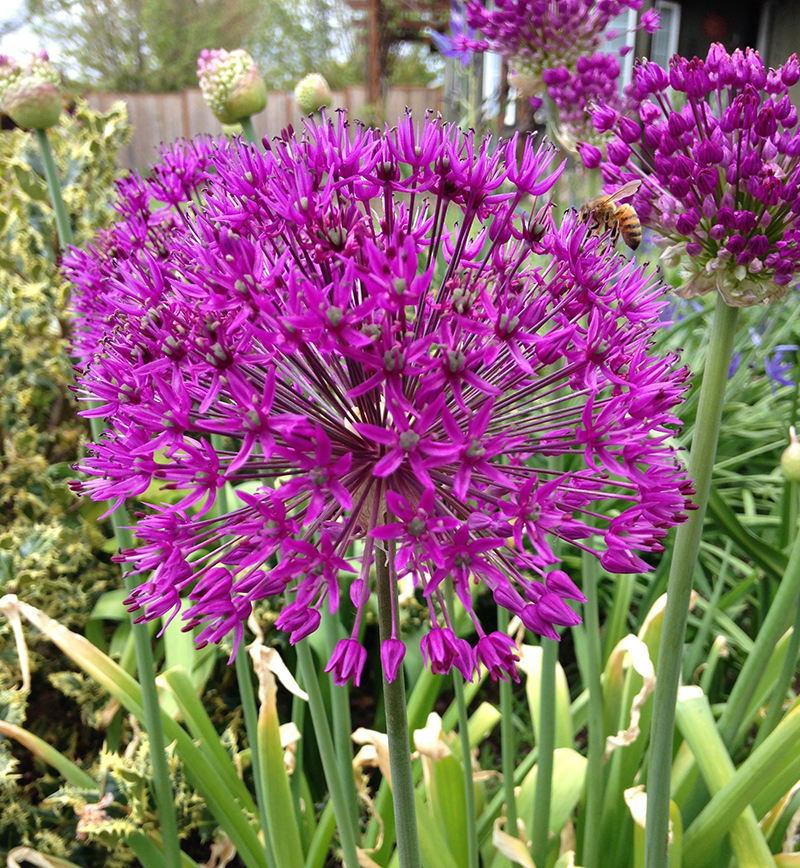Fall is an ideal time to plant bulbs that will yield spring blooms
When it comes to plants, bulbs are about as easy as it gets and now’s the time to get them in the ground.
“You plant spring-flowering bulbs in fall, they grow over winter, flourish in spring and go dormant in summer,” said Heather Stoven, a horticulturist with the Oregon State University Extension Service. “Once they’re in the ground, they do quite well over multiple years with little maintenance.”
On top of that, bulbs are drought tolerant. “That’s one of the great things about them,” Stoven said. “Since they go dormant in summer, they don’t need to be watered.”
If you plan to intermingle bulbs with perennials, or place them near shrubs, it’s best to pair them with plants that don’t need much irrigation, she said. Otherwise, if the area gets regular water, make sure the soil drains well.
Bulbs such as daffodils, tulips, crocuses and hyacinths are planted in the fall because they need some time to get their roots going before pushing up to put on a spring show. Although October and November are ideal for planting, these bulbs can go into the ground until mid-December.
When purchasing bulbs, choose large ones. The bigger the bulb, the bigger the bloom, Stoven said. Also, avoid those with mold or soft spots, which signal rot. Plant as soon as possible, but if something comes up to delay you, store bulbs in a cool, dim place such as an unlit garage.
Make a plan before heading to the garden center and decide on color combinations. Do a little research so that you can choose early, mid- and late-blooming varieties for a longer display. Think about what to plant together — a mix of different types of bulbs is an attractive option. A big swath of the same type and color bulbs will make a statement, too.
As you get ready to plant, dig holes to fit multiple bulbs rather than planting one at a time. The effect is more natural.“ Groupings are really nice,” Stoven said. “You’ll get a mass of color.”
When digging the hole, it’s best to follow directions on the package for planting depth, but a general rule of thumb is three times as deep as the bulb is wide. Add some organic material – compost, well-rotted manure or mulch – to the bottom of the hole, place bulb pointed side up and cover with soil. Adding fertilizer is not necessary, but if you feel compelled, use super phosphate or a low-concentrated product labeled for bulbs, Stoven said.
There’s no need to dig bulbs up after flowering. Letting the foliage turn brown and die back is a good idea so that the nutrients contained in the leaves return to the bulb, and it can start the cycle once again.
Here are Stoven’s recommendations for uncommon spring-blooming bulbs:
- Fawn lily (Erythronium oregonum) — An Oregon native wildflower with dainty, nodding white or yellowish flowers and brown-stained leaves. Doesn’t mind shade and looks inviting in a woodland setting.
- Grecian windflower (Anemone blanda) — Delicate, star-like flowers come in blue, white and pink on frilly foliage that melts away soon after bloom is over. Best used in a mass. “Blue is especially nice to have as a contrast to yellow daffodils,” Stoven said.
- Allium — Part of the garlic family, this deer-resistant bulb puts up a stem with one ball-shaped flower, usually in shades of purple, pink and blue, more infrequently white. Sizes vary widely from the 10-inch flowers of ‘Globemaster’ to the tiny pops of 1-inch drumstick alliums.
- Fritillaria — Another group of bulbs with wide variation. On crown imperial fritillaria (F. imperialis), bell-shaped flowers in orange or yellow hang in clusters from single stems up to 5 feet tall. The much-smaller native checker lily (F. affinis) has dark purple flowers spotted irregularly with yellow.
- Species tulips — Just like their big siblings, but shorter, hardier and longer lasting. They come in many colors and often the flowers open wider than regular tulips. These bulbs will seed themselves, so they’ll naturalize and give years of enjoyment.
About OSU Extension: The Oregon State University Extension Service shares research-based knowledge with people and communities in Oregon’s 36 counties and the Confederated Tribes of Warm Springs. OSU Extension addresses issues that matter to urban and rural Oregonians. OSU Extension’s partnerships and programs contribute to a healthy, prosperous and sustainable future for Oregon.

